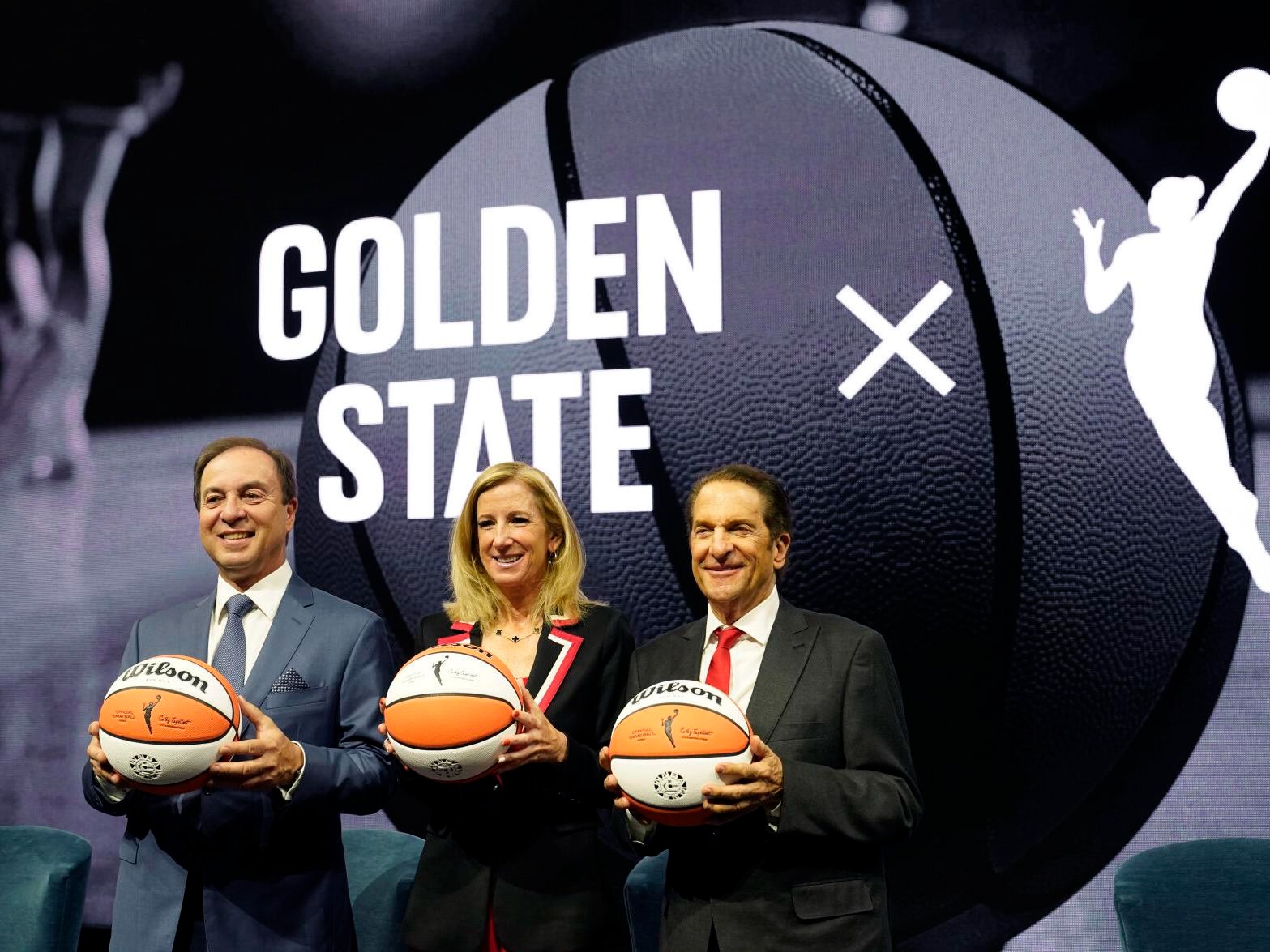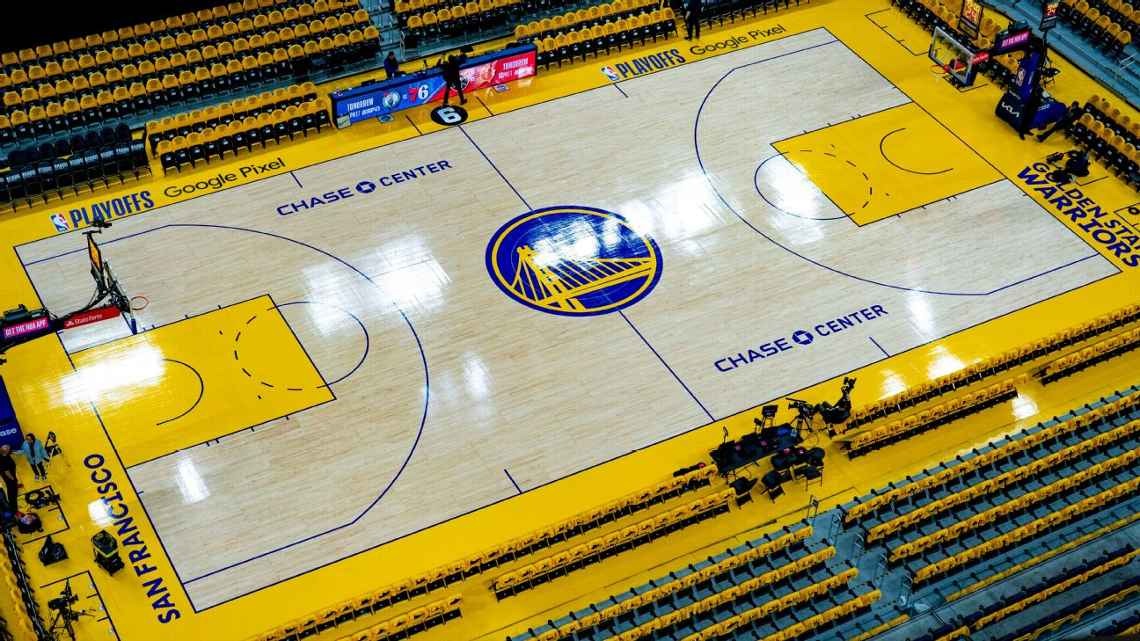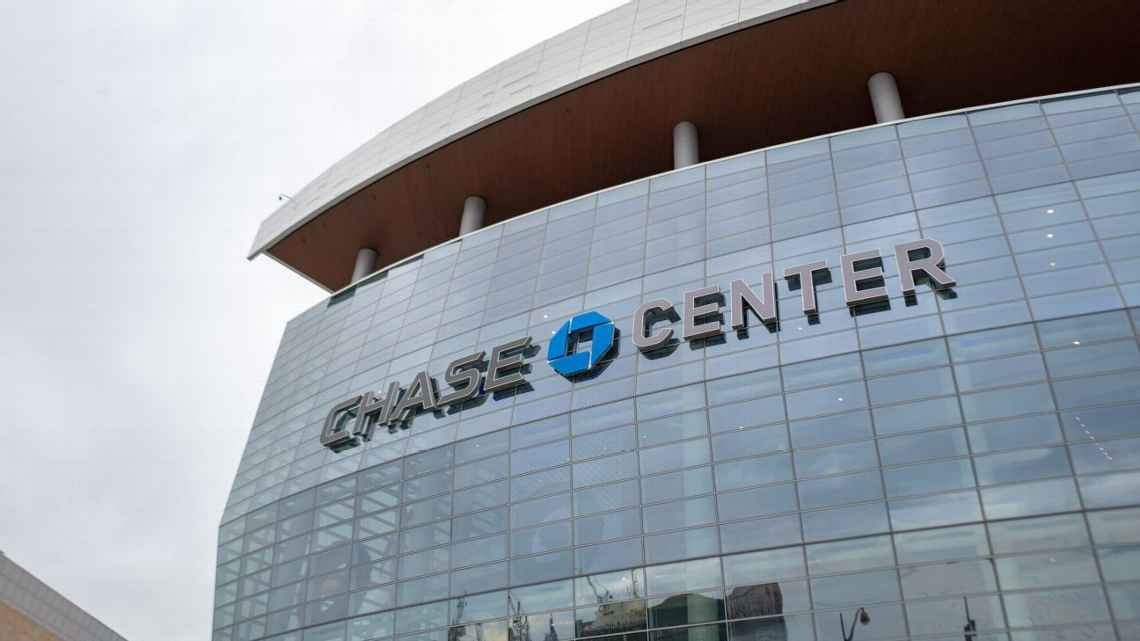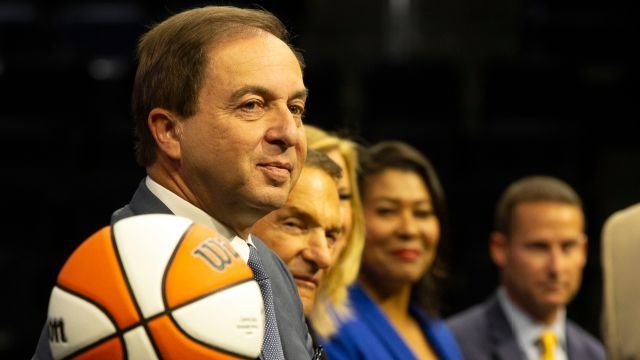WNBA fans have long clamored for expansion, and that day is finally here: The league will add a 13th team in the Bay Area, awarded to the NBA’s Golden State Warriors, that will begin play in 2025, the WNBA announced Thursday.
A second expansion franchise is expected to be announced this year, likely Portland, per ESPN’s Ramona Shelburne. That franchise would also begin play in 2025. WNBA commissioner Cathy Engelbert confirmed in a news conference Thursday the league’s goal is to have 14 teams by 2025.

Engelbert and Warriors personnel declined to reveal the expansion fee the Warriors paid. Engelbert added only that it was “a record-breaking expansion fee” for the league, along with other significant investments that come with starting a WNBA franchise.
The league, which had as many as 16 teams in 2000, has held steady at 12 teams since 2010, after the Sacramento Monarchs folded the previous year. It last had 14 teams in 2008, when both the Monarchs and Houston Comets were still playing.
The long-awaited news of expansion won’t just open up more roster spots — which currently is at a maximum of 144, or 12 per team — but will also reestablish the WNBA in at least one market where the league has already been: The Monarchs were an original franchise and played in Sacramento from 1997 to 2009, winning a championship in 2005. The Portland Fire were added in 2000 before the franchise folded in 2002.
The new team — which will likely be called “Golden State” per Shelburne, though its official name and mascot are still to be determined — will play home games at the Chase Center in San Francisco (where the Warriors play) and will practice in Oakland at the Warriors’ former practice facility.
The Warriors are the sixth NBA franchise with a WNBA team, joining the Indiana Pacers (Indiana Fever), Minnesota Timberwolves (Minnesota Lynx), Brooklyn Nets (New York Liberty), Phoenix Suns (Phoenix Mercury) and Washington Wizards (Washington Mystics).
Golden State also expands the league’s footprint out West, giving the WNBA five teams in the Pacific or Mountain time zones.
ESPN’s Alexa Philippou, Michael Voepel and Kevin Pelton break down what we know and what we are still waiting to find out about the new Golden State WNBA team and the league’s expansion plans.
Why is the WNBA expanding now?
Warriors personnel and Engelbert pointed to signs that women’s basketball and women’s sports in general are taking off. On Thursday they mentioned how viewership, attendance and merchandise sales are all going in the right direction, as well as increased sponsorship interest even within the past five to 10 years. To put it simply: “The league is ready,” said Joe Lacob, Warrior co-executive chairman and CEO.
While the WNBA sat on expansion for over a decade, the NWSL (which began competition in 2013) has showcased the surging interest and investment in women’s sports, as the league has expanded from eight to 12 teams since 2021 and has three more to come, including one in the Bay Area.

The inability of promising yet developing players, or even already established talented veterans, to maintain roster spots in the league has led to calls for the WNBA to expand its size, which could be done either via franchise expansion or by increasing the number of players teams are permitted to carry. WNBA stakeholders have different opinions on which route would be best, but Engelbert has maintained she believes franchise expansion is the way to go.
“The depth of the talent in this league has never been better, and the depth of the talent and breadth of the talent coming out of the NCAA system has never been better,” Engelbert said Thursday.
Franchise expansion will arrive amid enormous excitement over the crop of talent and high-profile players currently in college — a group Engelbert called “generational players” Thursday — with the likes of Iowa’s Caitlin Clark, LSU’s Angel Reese, Stanford’s Cameron Brink, UConn’s Paige Bueckers and Azzi Fudd and Notre Dame’s Olivia Miles expected to go pro over the next few years.
The 2025 calendar year will be pivotal for the league even beyond expansion. While the current CBA runs through 2027, there is a mutual opt-out clause that could go into effect at the end of the 2025 campaign. The league’s media rights deal with ESPN also runs through 2025. Engelbert has previously identified the new rights deal — and as part of that the league’s valuation — as critical to the league’s growth, and has said that expansion can help boost the league’s value ahead of those negotiations. — Philippou
How will a WNBA expansion team be built?
Engelbert said Thursday that details on how Golden State will build its roster will be discussed after the WNBA Finals when both the competition committee and board of governors meet. She said an expansion draft would likely happen in late 2024, after the draft lottery for the 2025 draft is held.
While we don’t know exactly how the process will go, we can look to history for precedent. In 2008, the Atlanta Dream built their inaugural roster of 13 players via an expansion draft by selecting from a pool of available players from the other 13 WNBA franchises, and by conducting multiple trades. For the expansion draft, which was held in February before free agency, each team was able to protect a maximum of six players who were not eligible for selection by Atlanta. The Dream could choose one player from each team regardless of contract status, although they couldn’t select multiple unrestricted free agents. Atlanta then had the right to “core” that unrestricted free agent — in the Dream’s case, Betty Lennox.

The last time an expansion draft was held for multiple incoming franchises was in 2000: the still-running Indiana Fever and Seattle Storm as well as the now-defunct Miami Sol and Portland. In that expansion draft, the rules largely preserved existing teams, allowing them to protect eight of their nine top players. The new teams selected six players in the expansion draft and filled out their rosters in the 2000 draft or via trades.
In 2008, the Dream were assigned the No. 4 pick and did not participate in the lottery. In 2006, the Chicago Sky were assigned the sixth pick, behind the five teams that missed the playoffs the previous season.
Again, these aren’t necessarily the rules the league will dictate as Golden State builds its roster, but they give us an idea of what could happen. — Philippou
Why is the Bay Area a good fit? What might set this Golden State team apart?
Aside from the Bay Area’s women’s basketball tradition and roots, the region makes sense from an economic perspective. Engelbert mentioned multiple times the potential to capitalize off Silicon Valley as a “global hub of technology and commerce and innovation.”
“Technology is driving our economy, and the tech center of your country doesn’t have a WNBA team — that doesn’t seem right to me,” the commissioner said. The Bay Area is also a big media market and had favorable “demographics and the psychographics” for a WNBA team, she said.
Engelbert mentioned the importance of bringing in “long-term owners committed to success, not just to the team and winning championships but to the league overall,” and the Warriors seem like they’ll fit that bill perfectly. The fact that this Golden State team will play in a state-of-the-art arena such as the Chase Center and practice in a NBA-grade facility in Oakland shows the standard for investment in the league is light-years better than where it was even five years ago.
The Warriors have the expertise on how to operate a massive successful basketball franchise, and Lacob has shown a commitment to women’s basketball previously with his involvement in the ABL and the San Jose Lasers. He noted that the sport is in a much different place than where it was in the late-1990s, but also said, “I’m a lot wiser now. … We are a little more experienced and we’re certainly well-capitalized and have good facilities.”

Many notable WNBA players have Bay Area ties: Sabrina Ionescu, Chelsea Gray, Danielle Robinson and Haley Jones are from the region. Stanford produced sisters Nneka Ogwumike and Chiney Ogwumike, as well as Brink, and Layshia Clarendon went to Cal. Bay Area fans would be even more excited about their new team should it manage to get any of those local legends. — Philippou
It’s important to remember the Monarchs franchise didn’t fold for lack of fan support. It was one of the franchises that was a victim of the global financial crisis of 2006 to ’08, and the Maloof family — which then also owned the NBA’s Sacramento Kings — got out of the WNBA.
There were Bay Area fans who supported the Monarchs; now they won’t have as far to travel. Between the Stanford fan base, former Monarchs and Lasers fans, and cultivating new fans, this organization should be able to establish a solid following. — Voepel
How long might it take for an expansion team to become competitive?
Lacob boldly said in Thursday’s news conference that the Golden State team will win a championship within its first five years of existence (something he also said when he purchased the Warriors). That said, history tells us not to expect too much, too soon from an expansion team. The last two franchises added to the league won a combined nine games in their first season of play, with Chicago going 5-29 and Atlanta 4-30. But their paths diverged from there.
The Dream landed Angel McCoughtry by winning the 2009 draft lottery and improved by 14 wins in Year 2, making the playoffs. A year after that, Atlanta reached the WNBA Finals for the first of three trips in four years led by McCoughtry.
Meanwhile, the Sky were still struggling to make the playoffs despite arriving in the league two years earlier. Their first postseason trip didn’t come until their eighth season in 2013, when the addition of future MVP Elena Delle Donne as a rookie to another future MVP in Sylvia Fowles produced a 24-10 record. Chicago made the Finals for the first time the following year.
Making the Finals in Year 3 might not be realistic for the Golden State franchise, but with the Warriors’ resources, it’s unlikely the process will be as slow as it was for the Sky. — Pelton